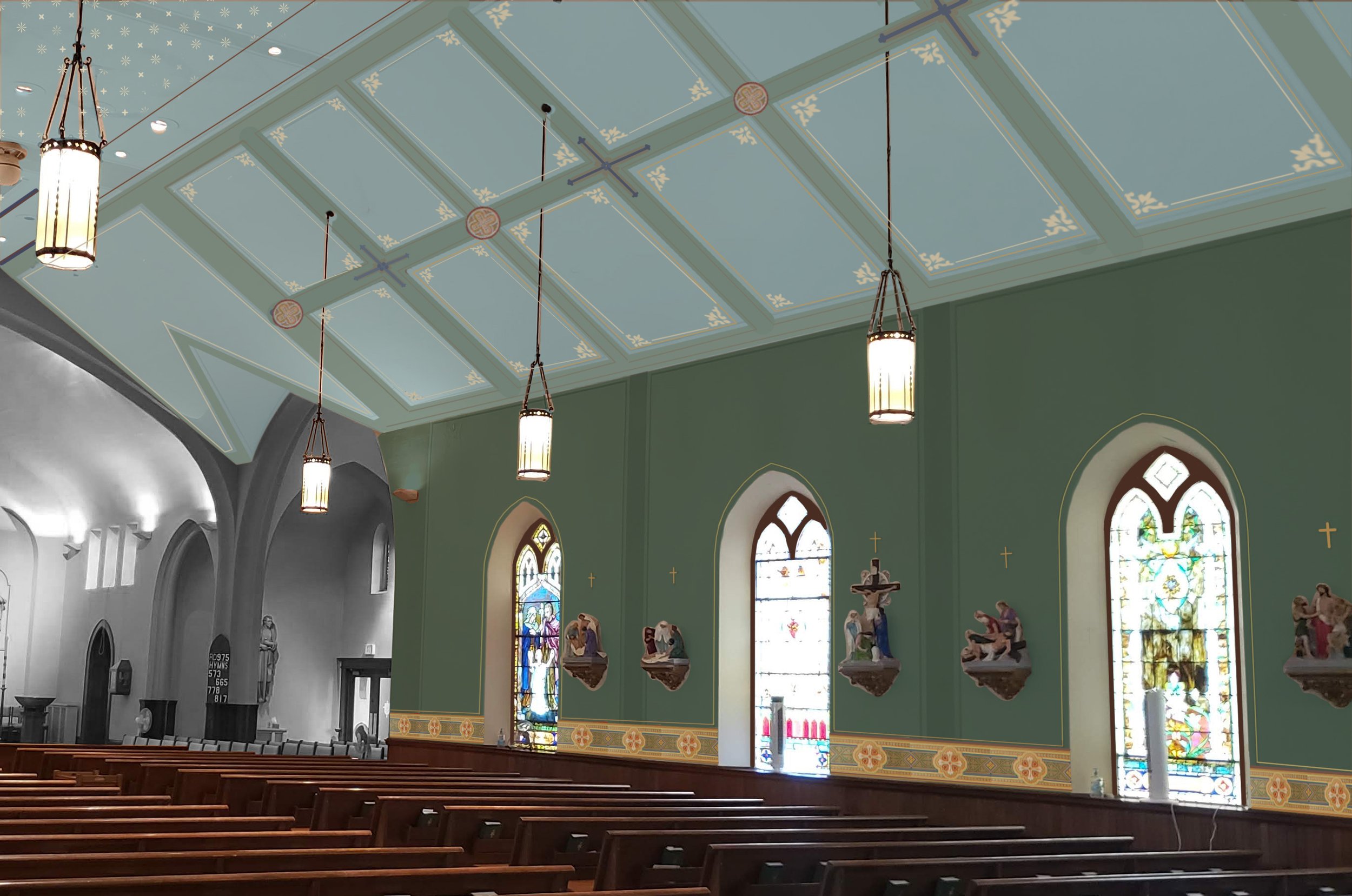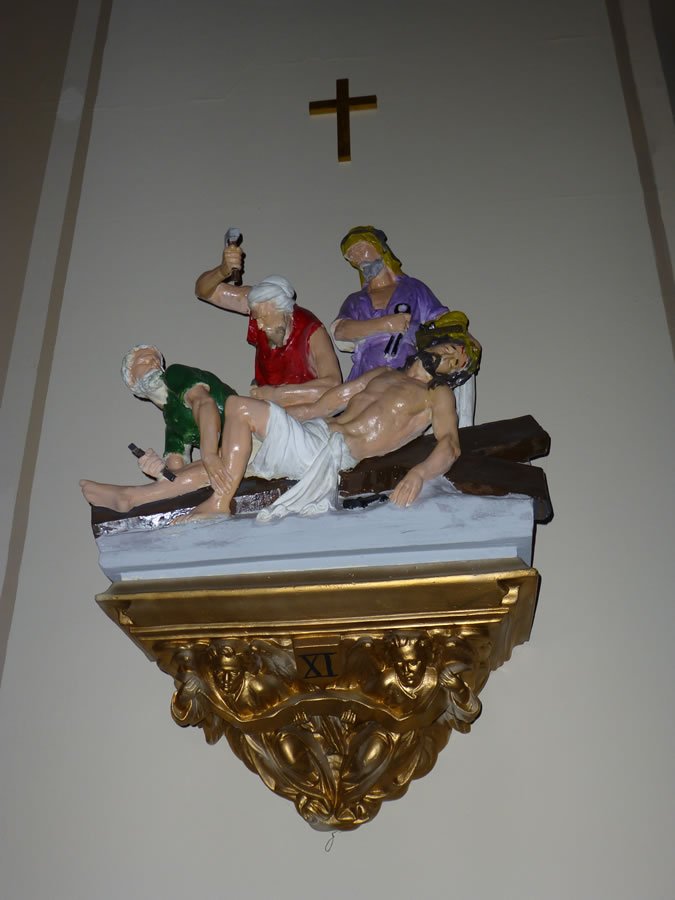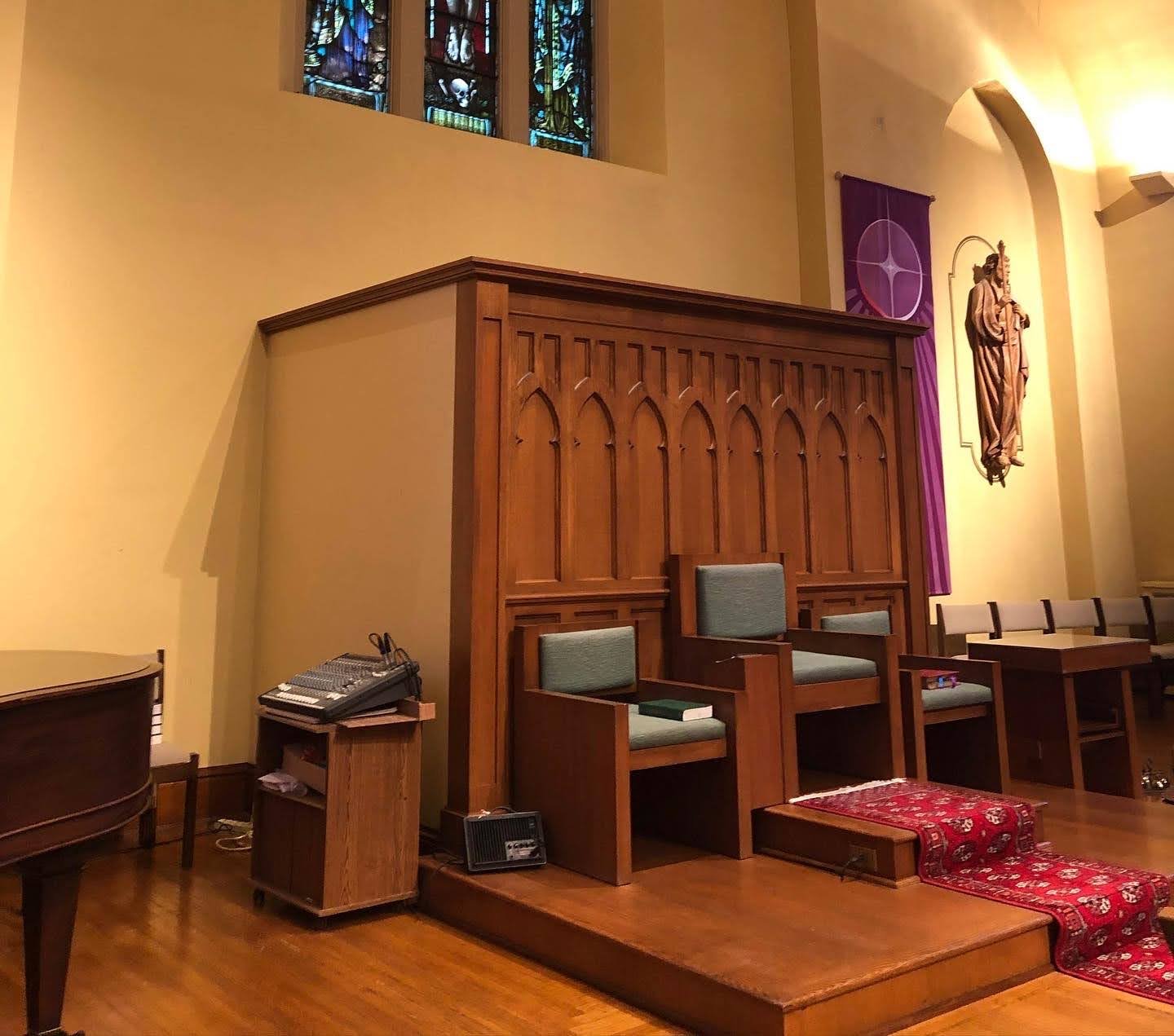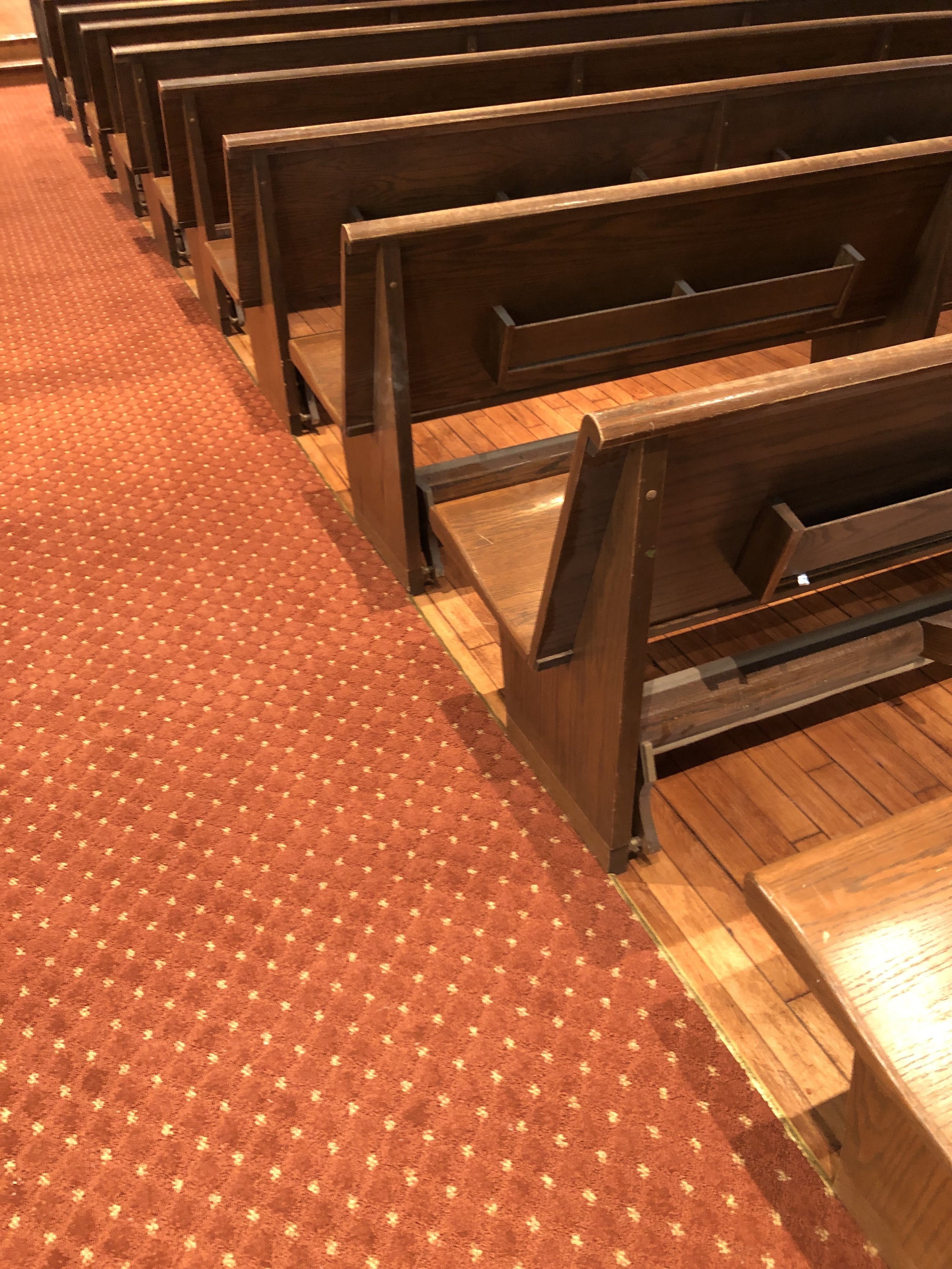St. Michael’s Church
Design and intimate administration for the rehabilitation of the Sanctuary at St. Michael’s Roman Catholic Church in Newark, New York. Several interior restoration projects, liturgical embellishments, and finish upgrades resulted in a transformative worship space to better serve the Diocese, the congregation, and their mission.

Existing Building & History
Built in 1906, the church remains the main parish for Wayne County, under the Diocese of Rochester. No significant upgrades or rehabilitation work had been done to the Sanctuary since the 1980s. The space required several areas of both wall and ceiling plaster stabilization and repair since correcting a roof leak in the last few years. There was also considerable programming changes in the Mass which required an intense liturgical study.
While the oak flooring under the pews only required refinishing, the carpet and underlayment needed a full replacement. The lamps in the original pendants as well as the track lighting in the High Altar needed to be replaced and rewired to the control center, which coincided nicely with the plaster rehabilitation.
Liturgical Painting & Embellishments
The most notable upgrade to the Sanctuary was the paint embellishment updates in the High Altar, Nave, and North and South Transepts. I worked closely with Swiatek Studios of Buffalo, New York in the Schematic Design through Construction Administration phases to develop the comprehensive color palette and detailed liturgical elements in the stenciling, mural, and statuary painting.
After conceptual approval, physical samples were performed during construction. Imagery in the stenciling throughout the Sanctuary features Quatrefoils in the form of crosses, Fleur-de-Lis representing divinity, as well as Roman Gothic floral and foliage imagery. The color palette was concentrated in these areas and included gold leaf effect paint for a saturated and dynamic result.
These samples were extremely helpful to the construction process, especially in the High Altar where we embraced the terracotta hues with a subtle gold leaf stencil. The effect is warm yet understated with a focus on the Reredos, stained glass window, and statuary. In lieu of the anticipated “starry night” ceiling treatment, we opted for a coffered effect on the ceiling above the High Altar to enclose the space for an intimate experience as you approach the Tabernacle.
We utilized rough renders over existing photos to develop the preliminary options and to home in on the Parish’s liturgical needs. Special attention would be given to the High Altar, specifically in the murals and the Mary and Joseph statuary. In fact, all statuary including the Stations of the Cross, would be retained and repainted for a comprehensive aesthetic in lieu of replacement to remain on budget.
Reredos Rehabilitation
Several options were considered throughout the project to increase the size and function of the Reredos at the High Altar including a fully designed and newly built wood altar as well as the transfer and adaptation of a marble Reredos from a nearby parish. Ultimately, we landed on the rehabilitation of the current, non original, Reredos for both budget and timeline purposes. The result is much more appropriate for the size of the space as well as the original period stylings. This included creating a platform to house the Tabernacle which was relocated from the side altar where it had been situated since the 1980s back to its original location at the center of the High Altar.
Reredos Elevations
Reredos Rendering
Carpet Replacement
Careful attention was also given to the carpet replacement to the entire first level of the church. A highly durable broadloom carpet was selected that not only had a combination cut and tufted fabric loop to give a textured appearance, but a subtle stipple pattern that ensured an elegant overall effect while not feeling too commercial or cold. This particular carpet series had two colorways that were considered, this saturated terracotta and a deep indigo, However, in the end the terracotta was the best compliment to the existing wood tones as well as the overall color palette.






















